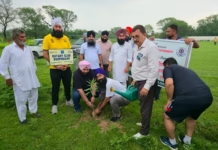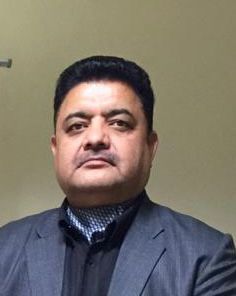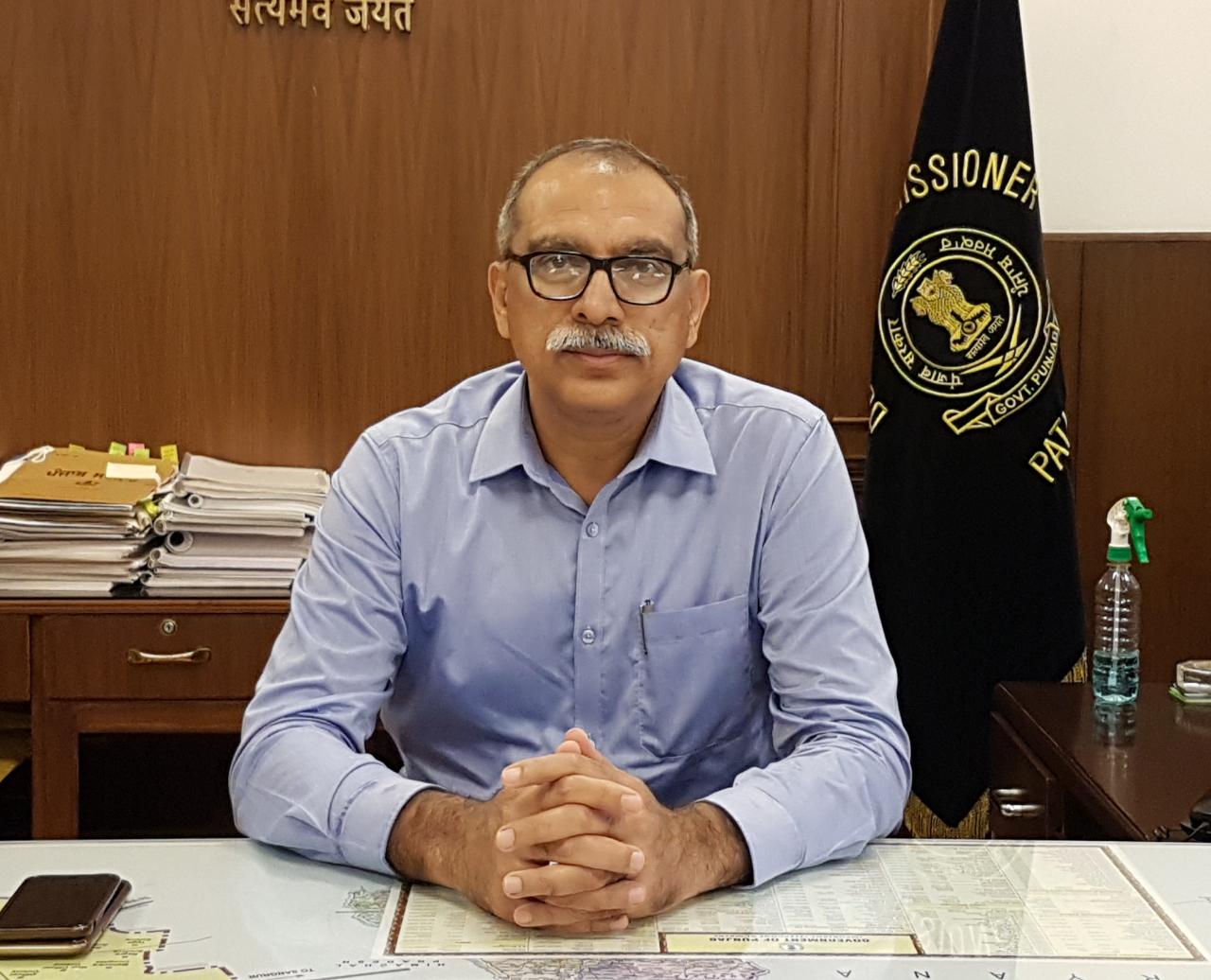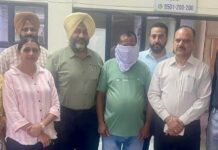April 13 changed the history of India-Puri
Jaswant Singh Puri/ April 13,2023
The festival of Baisakhi also pronounced as Vaisakhi is celebrated to mark the onset of spring in India. The time of Baisakhi usually signifies the end of the harvest season.It is an occasion of immense festivity for farmers, the Sikhs and other communities also. It is celebrated on 13th or 14th of April every year. It marks the first day of the month of Vaisakh. Baisakhi is also the date for the Indian Solar New Year. On this day, about 5297 years ago, Raja Shanti Karan Dogra, also called as Raja Shastri, started the Shastri Calendar alias Dogra-Pahari Calendar. So this day has a unique historical significance. Baisakhi is known by diverse names in other parts of India like Pohela Boisakh in West Bengal, Bohag Bihu in Assam, Puthandu in Tamil Nadu, Bihu in Uttrakhand, Ugadi in Andhra Pradesh and Karnataka, Pooram Vishu in Kerala and Maha Vishuvu Sankranti in Odisha.
For the Sikhs, the Baisakhi day in addition to its importance as the harvest festival, it marks the birth of the Khalsa Panth by the tenth Guru of the Sikhs Sri Guru Gobind Singh Ji on 13th April, 1699 at Sri Anandpur Sahib.The day commemorates to sanctify the formation of Khalsa Panth after the execution of Sri Guru Tegh Bahadur Ji, the ninth Guru of the Sikhs, for refusing to convert to Islam under the orders of Mughal Emperor Aurangzeb.
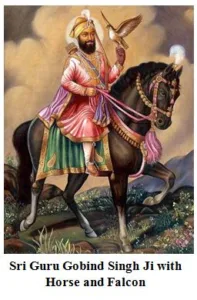
The martyrdom of Sri Guru Tegh Bahadur triggered the rise of the last Guru of Sikhism, Sri Guru Gobind Singh Ji who laid the foundation of the Khalsa Pant hand decided to fight violence with violence. Khalsa Panth rose as a family of soldier saints. Sri Guru Gobind Singh Ji’s prime mission was the concept of the ideal man as established by the first nine Gurus. This concept was extended, chiseled and polished by Sri Guru Gobind Singh Ji through the creation of the Khalsa. The Khalsa as formulated by the tenth Guru was a group of saints and soldiers. His respect and honour for the Khalsa is nowhere better seen than in one of his following compositions:
ਜੁੱਧ ਜਿਤੇ ਇਨਹੀ ਕੇ ਪ੍ਰਸਾਦਿ ਇਨਹੀ ਕੇ ਪ੍ਰਸਾਦਿ ਸੁ ਦਾਨ ਕਰੇ ।।
ਅਘ ਅਉਘ ਟਰੈ ਇਨਹੀ ਕੇ ਪ੍ਰਸਾਦਿ ਇਨਹੀ ਕੀ ਕ੍ਰਿਪਾ ਫੁਨ ਧਾਮ ਭਰੇ ।।
ਇਨਹੀ ਕੇ ਪ੍ਰਸਾਦਿ ਸੁ ਬਿਦਿਆ ਲਈ ਇਨਹੀ ਕੀ ਕ੍ਰਿਪਾ ਸਭ ਸਤ੍ਰ ਮਰੇ ।।
ਇਨਹੀ ਕਿ ਕ੍ਰਿਪਾ ਕੇ ਸਜੇ ਹਮ ਹੈ ਨਹੀ ਮੋਸੋ ਗਰੀਬ ਕਰੋਰ ਪਰੇ ।।
“It is through the actions of the Khalsa that I have been victorious,
and have been able to give charities to others.
It is through their help that I have overcome all sorrow and ailments and have been able to fill my house with treasures.
It is through their grace that I have got education, and through their assistance I have conquered all my enemies.
It is through their assistance that I have attained this status, otherwise there are millions of unknown mortals like me”.
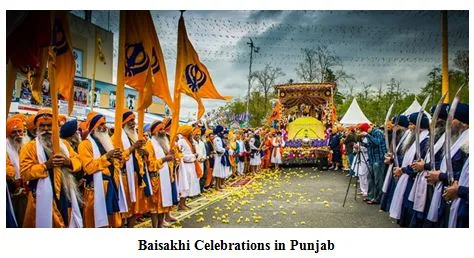
It is said that on this historical day of Baisakhi, Sri Guru Gobind Singh Ji came out of a tent with a mighty sword in his hand. He challenged and told the Sikhs that only those who were ready to die should enter the tent after him. Saying this, he went inside the tent and after some time returned with five men wearing turbans. These five were the Five Beloved Ones (Panj Pyaras). Individually, each one was called a ‘Singh’ (lion) and collectively they were given the name Khalsa. During the first few days of the month of April 1699, about eighty thousand men were graced with the Sikh baptism to join the Khalsa Panth.
13thApril, the Baisakhi day in 1919 is also associated with Jallianwala Bagh Massacre in the holy city of Amritsar also called Amritsar Massacre. It was an infamous episode of brutality which saw General Reginald Dyer’s orders to his troops to open fire on unarmed crowd of men, women and children entrapped in an abandoned walled garden during a Sikh Festival of Baisakhi.
On the afternoon of 13th April, about 20,000 Indian civilians gathered in the abandoned walled garden of Jallianwala Bagh, a space that crucially had only five narrow entrances. Many people were there to celebrate the Baisakhi festival peacefully. Others were there to protest against the recent imprisonment of important independent activists Saifuddin Kitchlew and Satya Pal who were arrested on April 10, 1919. In view of the protest, the Britishers banned the public gatherings. But the public was unaware of the order. The Jallianwala Bagh had only one exit point. With a motive to punish civilians for showing disobedience, Brigadier – General Reginald Dyer arrived at the Jallianwala Bagh and sealed off the exit point to ensure nobody could flee the place. He ordered the troops to fire on unarmed civilians. The troops continued shooting until all the rounds of ammunition had exhausted. About 1650 rounds of bullets were fired on unarmed public. Many people raised slogans of ‘Inquilab Zindabad’ and jumped into a well.More than 200 bodies were recovered from the well after firing. It is unclear how many people lost their lives in the bloodbath but thousands and thousands were injured. Jallianwala Bagh Massacre still remains the darkest day in Indian history. Those ten minutes of April 13, 1919 became immortal story of our freedom struggle. Their unparalleled courage and sacrifice will keep motivating the coming generations.
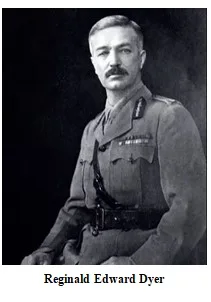
The Jallianwala Bagh Massacre angered the Indians and Mahatma Gandhi gave a call for non-cooperation movement. The slaughter left a permanent stain on Indo-British relations and paved the way for Mahatma Gandhi’s entire devotion to seek independence from the clutches of British Empire. The poet and Nobel Prize winner Rabindranath Tagore refused to accept his knighthood. The shooting was deemed ‘monstrous’ by Winston Churchill in 1920. Dyer was censured for his conduct and ordered to leave the military.
General Dyer was assassinated on 13th March, 1940 at Caxton Hall, London by Sardar Udham Singh who was an Indian revolutionary belonging to Gadhar Party and Hindustan Socialist Republican Association (HSRA).General Dyer was assassinated in revenge for the Jallianwala Bagh Massacre on 13th April, 1919 for which Dyer was responsible. Udham Singh was subsequently tried and convicted of murder and hanged in July, 1940 in Pentoville Prison, London, England. He is also referred to as Shaheed-e-Azam Sardar Udham Singh. The Times of London called him a fighter for freedom. In 1974, Udham Singh’s remains were repatriated to India. He was posthumously awarded the ‘Nishaan-e-Khalsa’ by the Anandpur Sahib Foundation in 1999 during the tercentenary of the creation of Khalsa and the centenary of Udham Singh’s birth. A museum has been dedicated to Udham Singh near Jallianwala Bagh, Amritsar. His ancestral house in Sunam has been converted into a museum. The official name of his ancestral town Sunam was changed to ‘Sunam Udham Singh Wala’. Udham Singh Nagar in Uttrakhand is named after him.
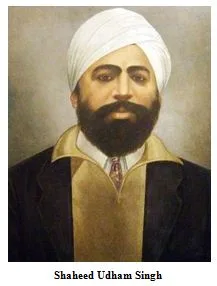
Jallianwala Bagh is a historic garden and memorial of national significance, close to the Golden Temple complex in the holy city of Amritsar. It is preserved in the memory of those wounded and killed in the Jallianwala Bagh Massacre. The seven acre site houses a museum, gallery and several memorial structures which is managed by the Jallianwala Bagh National Memorial Trust. The Government of India established the site as a ‘memorial of national importance’. At the entrance is a statue of Udham Singh. A number of the bullet holes in the wall are preserved. The wall has its own historic significance as it has thirty-six bullet marks. The flame of liberty is represented by a Central Pylon. The Martyrs Gallery contains a number of paintings.
The blood soaked soil of Jallianwala Bagh became a rallying cry for Indian freedom fighters to fight tooth and nail against the British imperialism. The author also remembers Udham Singh’s quote: “I do not mind my sentence, ten, twenty or fifty years to be hanged. I have done my duty.” Let us salute to the martyrs of our country.

Note: This article is dedicated to Smt. Alka Puri wife of Dr. Ajit Singh Puri and mother of Jaswant Singh Puri.
(The views expressed are personal)


